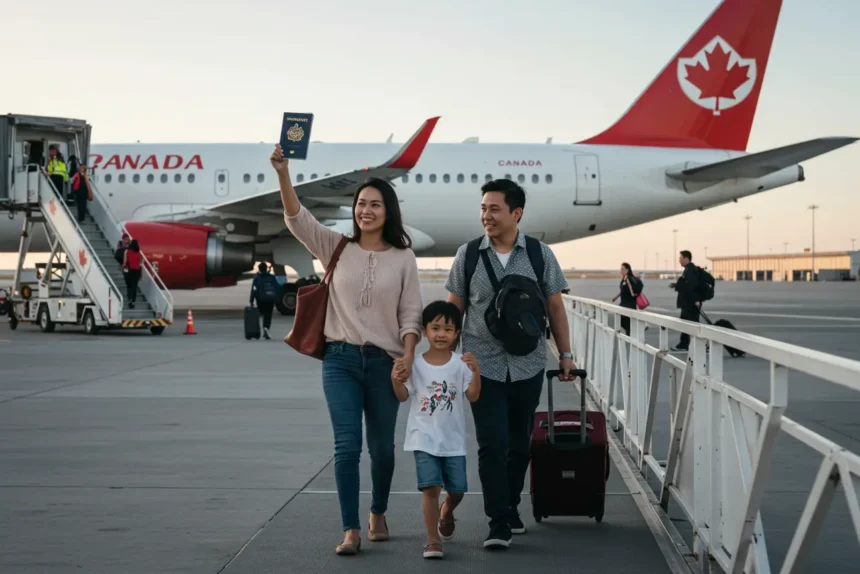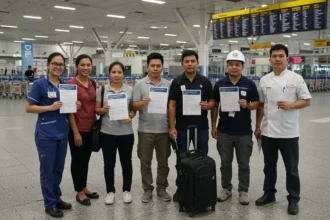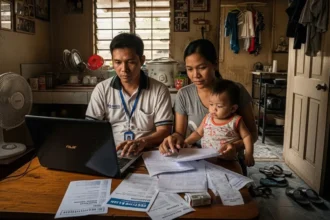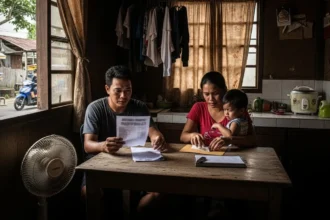Canada has become one of the most popular destinations for Filipinos, with over 900,000 kababayans already calling it home. Known for its high demand for skilled workers, family-friendly immigration policies, and excellent quality of life, Canada continues to open doors for Pinoys who dream of working and settling abroad.
- 💼 Overview of Pathways to Work & Settle in Canada
- 💼 Top 10 Jobs for Filipinos in Canada: Monthly Salary Estimates (2025)
- 🇨🇦 Express Entry Skilled Worker Pathway
- 🏙️ Provincial Nominee Program (PNP)
- 🎓 Student-to-PR Pathway
- 👩👩👧 Caregiver Pathway
- 🌍 Other Work Visa Options
- 🧳 Preparing for Your Move
- 🌟 Success Stories & Tips
- Frequently Asked Questions about Migrating to Canada from the Philippines
- 🌏 Turning Your Canadian Dream Into Reality
- 📚 References
In this guide, we’ll walk you through the main pathways to migrate to Canada from the Philippines – from Express Entry to study-to-PR and caregiver programs. Whether you’re aiming for a stable job, permanent residency, or a brighter future for your family, this roadmap will help you take your first step toward the Canadian dream.

💼 Overview of Pathways to Work & Settle in Canada
There isn’t a single formula to migrate to Canada from the Philippines. Instead, there are multiple legal pathways – each with its own requirements, costs, and timelines. Some are designed for skilled professionals, others for students, caregivers, or those with family already in Canada. The good news? Almost every Filipino, regardless of background, can find a route that fits their situation.
Here are the main pathways Pinoys use to work and eventually get Permanent Residency (PR):
✨ Federal Skilled Worker / Express Entry
This is Canada’s flagship immigration system. Express Entry uses a points-based system called the Comprehensive Ranking System (CRS) to rank applicants based on age, education, work experience, language skills, and adaptability.
- Why it’s attractive: Fast processing (often 6–12 months) and direct PR.
- Who it’s for: Professionals, skilled workers, and OFWs with experience in in-demand fields (healthcare, IT, engineering, finance, etc.).
- Key benefit: You can apply with your family (spouse and children) included in your PR application from day one.
🏙️ Provincial Nominee Programs (PNP)
Each Canadian province runs its own immigration programs targeting specific industries and labor shortages. For example:
- Ontario: nurses, IT professionals, accountants.
- Alberta: tradespeople, transport workers, engineers.
- Manitoba & Saskatchewan: agriculture and food processing workers.
If a province nominates you, you get 600 additional CRS points, which almost guarantees an invitation for PR.
- Why it’s attractive: Opens doors even if your CRS score under Express Entry is not high enough.
- Who it’s for: Filipinos willing to settle in a specific province and match its labor needs.
- Special pilots: Atlantic Immigration Program (for Atlantic provinces) and Rural & Northern Immigration Pilot (for small towns) are designed to bring newcomers into smaller communities.
🎓 Student-to-PR Pathway
For many Filipinos, studying in Canada is the most realistic entry point. It requires investment, but it’s one of the surest ways to build eligibility for PR.
- Study Permit: Enroll in a program at a Designated Learning Institution (DLI).
- Work While Studying: Students can work part-time during school and full-time during breaks.
- Post-Graduation Work Permit (PGWP): After finishing, you can work in Canada for up to 3 years.
- PR Application: Canadian education and work experience give you big points under Express Entry and make you eligible for Canadian Experience Class or many PNPs.
- Why it’s attractive: Employers prefer local graduates, boosting your employability.
- Who it’s for: Younger Filipinos and families who can afford tuition but want long-term stability in Canada.
- Bonus: Spouses of international students can work full-time, and kids can study in Canadian schools.
👩👩👧 Caregiver Pathways
Filipinos have long been the backbone of Canada’s caregiving industry. In 2025, Canada improved these programs with a new Home Care Worker PR Pathway, giving caregivers direct PR upon arrival in many cases.
- Why it’s attractive: Unlike before, caregivers don’t have to wait years working on temporary permits before applying for PR. Families can migrate together.
- Who it’s for: Filipinos with caregiving experience, especially nannies, nurses, and those who worked abroad in similar roles.
- Requirements: Job offer in caregiving, language proficiency (CLB4), at least one year post-secondary education.
👨👩👧👦 Other Routes to Canada
Beyond the major programs, there are additional options:
- Temporary Work Permits (TWP): Based on a Canadian employer’s job offer (usually requires LMIA approval). Many Pinoys enter through this route in healthcare, trades, and hospitality, then transition to PR later.
- Family Sponsorship: If you already have a spouse, parent, or child who is a Canadian citizen or PR, they can sponsor you.
- Quebec Immigration Programs: Quebec has its own selection system separate from Express Entry, mainly for French-speaking applicants.
👉 Bottom Line:
Whether you’re a nurse in Manila, an IT worker in Cebu, a fresh graduate in Davao, or a parent looking to secure your family’s future, there is a Canadian immigration pathway for you. The key is choosing the route that matches your skills, budget, and long-term goals.
💼 Top 10 Jobs for Filipinos in Canada: Monthly Salary Estimates (2025)
| Job / Profession | Approx. Monthly Salary (PHP) | Notes |
|---|---|---|
| Registered Nurse (RN) | ≈ ₱276,000 | Based on average RN salary ($75,228/year). |
| Caregiver / Home Support Worker | ≈ ₱146,000 | From caregiver salary data ($39,782/year). |
| IT / Software Developer | ₱211,000 – ₱352,000 | Depending on role and province. |
| Skilled Trades (Electrician, Plumber, Welder) | ₱176,000 – ₱282,000 | Trade salaries vary by union and region. |
| Licensed Practical Nurse (LPN / RPN) | ₱169,000 – ₱253,000 | Entry to advanced levels. |
| Early Childhood Educator / Childcare Worker | ₱141,000 – ₱197,000 | Often supported by PNP in-demand jobs. |
| Healthcare Aide / Personal Support Worker | ₱141,000 – ₱211,000 | Common entry point for Filipinos in healthcare. |
| Administrative / Office Support | ₱155,000 – ₱225,000 | Roles in HR, operations, office admin. |
| Retail Manager / Store Supervisor | ₱176,000 – ₱246,000 | Retail leadership roles, especially in cities. |
| Food Service / Chef / Cook | ₱155,000 – ₱211,000 | Popular entry pathway for Filipinos with F&B background. |

🇨🇦 Express Entry Skilled Worker Pathway
For many Filipinos, the Express Entry system is the fastest and most straightforward way to immigrate to Canada and get permanent residency (PR). It’s a points-based system that selects candidates based on their skills, education, and work experience.
📝 Step 1: Check Your Eligibility
To qualify for the Federal Skilled Worker Program under Express Entry, you must meet the basic requirements:
- Education: At least a high school diploma, though higher education (college or above) earns more points.
- Work Experience: Minimum of 1 year of full-time skilled work (NOC TEER categories 0, 1, 2, or 3). Overseas experience counts, but Canadian experience gets extra points.
- Language Proficiency: Proof of English or French skills (IELTS or CELPIP). Higher scores = higher CRS points.
- Proof of Funds: You must show settlement funds unless you already have a valid job offer in Canada.
Tip: Filipinos often score well on English tests due to our education system. Investing in IELTS review can significantly improve CRS scores.
💻 Step 2: Create Your Express Entry Profile
If you’re eligible, you create an online profile with your details. The system uses the Comprehensive Ranking System (CRS) to assign you points. Factors include:
- Age (younger candidates get more points, max at 29 years old)
- Education level and ECA (Educational Credential Assessment required)
- Language test scores
- Work experience (local and international)
- Spouse’s education and language skills (if applicable)
Your profile stays in the pool for up to 12 months.
📩 Step 3: Receive an Invitation to Apply (ITA)
Every two weeks, Canada conducts draws and invites the highest-scoring candidates to apply for PR. A provincial nomination (PNP) gives you an automatic +600 CRS points, almost guaranteeing selection.
🏡 Step 4: Apply for PR
Once you get an ITA, you have 60 days to submit your PR application online. You’ll need to provide documents such as passports, employment certificates, education records, medical exams, and police clearances. Processing usually takes around 6 months.
👨👩👧 Step 5: Bring Your Family
The best part? You can include your spouse and dependent children in your application. They’ll all become PRs together, giving your family access to free healthcare, public schooling, and social benefits.
👉 Why Filipinos Succeed in Express Entry
- Strong English proficiency compared to many other applicants
- Skilled work experience (especially in healthcare, IT, engineering, finance)
- Many Filipinos are young and well-educated, earning higher CRS points
Express Entry is competitive, but with preparation and the right strategy, it can be the fastest route for Pinoys to secure PR in as little as 6–12 months.
| Requirement | Minimum Standard | Tips for Filipinos |
|---|---|---|
| Education | High school diploma (more points for higher) | Get an ECA to validate your Philippine degree |
| Work Experience | At least 1 year full-time in NOC TEER 0–3 | Healthcare, IT, and engineering roles are highly valued |
| Language Proficiency | IELTS/CELPIP (CLB 7 or higher) | Retaking IELTS can boost CRS score significantly |
| Proof of Funds | CAD $13K–25K (₱500K–₱1M+) depending on family size | Savings must be liquid and in your name |
💰 Express Entry Costs
- Visa fees: CAD $1,365 (principal applicant, plus biometrics)
- Medical exams: CAD $200–$400 depending on clinic
- Educational Credential Assessment (ECA): ~CAD $200
- IELTS/CELPIP: ₱12,000–₱14,000
- Miscellaneous: police clearances, translations, courier fees
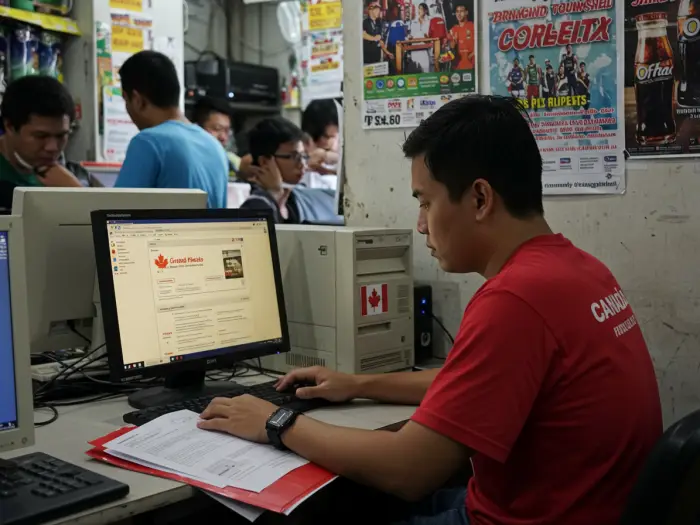
🏙️ Provincial Nominee Program (PNP)
Not everyone gets a high enough score in Express Entry right away – and that’s where the Provincial Nominee Program (PNP) comes in. Each Canadian province and territory (except Quebec and Nunavut) runs its own PNP to attract workers in demand for their local economy. For many Filipinos, this is the second most popular pathway to Canada PR after Express Entry.
📝 Step 1: Understand How PNP Works
There are two ways to apply:
- Direct to Province: Apply directly to a province’s PNP stream. If accepted, you get a nomination certificate and can apply for PR.
- Through Express Entry: Create an Express Entry profile and indicate your interest in specific provinces. If a province selects you, you’ll get a nomination that adds 600 CRS points – practically a guaranteed Invitation to Apply (ITA) for PR.
📌 Step 2: Identify In-Demand Occupations
Each province updates its list of priority occupations regularly. Examples include:
- Ontario: nurses, IT professionals, accountants
- Alberta: engineers, tradespeople, truck drivers
- Saskatchewan & Manitoba: agriculture and food processing workers
- British Columbia: healthcare, tech, construction, and early childhood educators
Tip: Many Filipinos succeed in PNP because our workforce matches these sectors, especially nursing, caregiving, IT, and skilled trades.
🧭 Step 3: Apply to the Right Stream
Provinces offer different streams, such as:
- Skilled Worker Streams: for those with work experience in targeted jobs
- International Graduate Streams: for students who studied in that province
- Employer-Driven Streams: for those with a job offer from a local employer
📩 Step 4: Receive Nomination & Apply for PR
If nominated, you’ll receive:
- Direct PNP Nomination: Apply for PR through IRCC.
- Express Entry PNP Nomination: Your CRS score increases by 600 points, ensuring an ITA at the next draw.
🌍 Step 5: Settle in the Province
PNPs expect you to live and work in the province that nominated you. Over time, once you’re a PR or citizen, you’ll have freedom to move anywhere in Canada.
👉 Special Pathways for Filipinos
- Atlantic Immigration Program (AIP): Designed for smaller provinces (Nova Scotia, New Brunswick, Newfoundland, and PEI) needing workers in healthcare, trades, and hospitality.
- Rural and Northern Immigration Pilot (RNIP): For small towns across Canada seeking long-term settlers.
- Community-Driven Programs: Some provinces run pilots where local employers endorse workers, making it easier for newcomers to settle.
Why Filipinos Choose PNP
- Opens doors even if your Express Entry score is not competitive.
- Many provinces actively recruit nurses, caregivers, and IT workers – industries where Filipinos shine.
- Pathway to PR is more predictable if you match the labor needs of a province.
| Province | In-Demand Jobs (Examples) | Why It’s Attractive for Filipinos |
|---|---|---|
| Ontario | Nurses, IT professionals, accountants | Large Filipino communities, many job openings |
| Alberta | Engineers, tradespeople, truck drivers | Strong demand in oil & gas, construction |
| Saskatchewan | Agriculture, food processing | Easier requirements, family-friendly settlement |
| British Columbia | Healthcare, tech, early childhood educators | Gateway to Vancouver, high salaries |
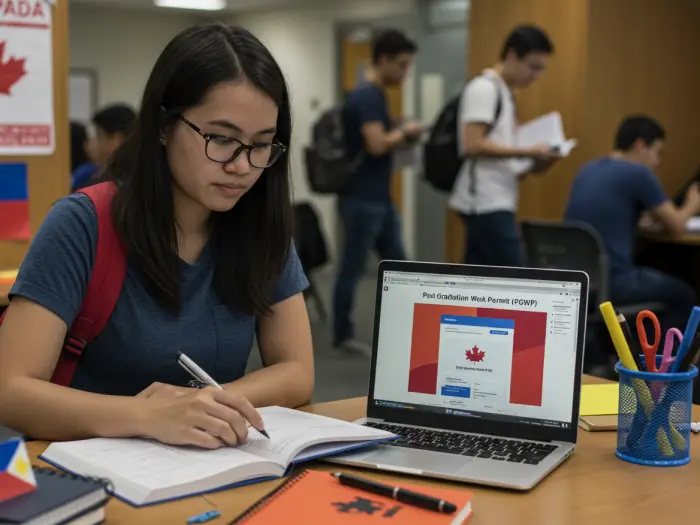
🎓 Student-to-PR Pathway
For many Filipinos, studying in Canada is one of the surest ways to eventually secure Permanent Residency (PR). While it requires significant financial investment, the pathway offers strong long-term rewards: Canadian education, local work experience, and a smoother transition to PR compared to applying from outside.
📝 Step 1: Choose a School and Program
- Apply to a Designated Learning Institution (DLI) – only DLIs make you eligible for a Post-Graduation Work Permit (PGWP).
- Pick a program aligned with in-demand jobs (healthcare, IT, engineering, business, trades). This increases your chances of employment after graduation.
Tip: Many Pinoy students start with diploma or 2-year college programs, which qualify for longer PGWP validity.
📖 Step 2: Apply for a Study Permit
- Submit your letter of acceptance, proof of funds, and documents (passport, biometrics, etc.).
- Proof of funds must cover tuition + living expenses for you and any family members coming with you.
👩🎓 Step 3: Study & Work in Canada
- Students can work 20 hours per week during classes and full-time during breaks.
- This helps cover living expenses while gaining Canadian work experience.
💼 Step 4: Post-Graduation Work Permit (PGWP)
- After graduation, apply for a PGWP, which allows you to work for up to 3 years (depending on program length).
- The PGWP is an open work permit, so you can work for any employer.
🏡 Step 5: Gain Canadian Work Experience
- At least 1 year of skilled Canadian work experience makes you eligible for the Canadian Experience Class (CEC) under Express Entry.
- Many provinces also give preference to international graduates in their PNP streams.
📩 Step 6: Apply for PR
- Use your Canadian education + work experience to maximize CRS points under Express Entry.
- Apply through the Canadian Experience Class (CEC) or a PNP stream targeting international graduates.
👨👩👧 Bringing Your Family
- Spouse: Eligible for an open work permit, meaning they can work full-time while you study.
- Children: Eligible for study permits to attend Canadian public schools.
- Once you apply for PR, you can include them so the whole family becomes permanent residents together.
Why Filipinos Choose the Student Pathway
- Canadian education + work experience are highly valued by employers.
- Higher chance of PR approval compared to applying from abroad.
- Family benefits: spouse can work, kids can study, everyone transitions together to PR.
| Step | What You Do | Long-Term Benefit |
|---|---|---|
| 1. Study | Enroll in a DLI school & program | Builds Canadian education credentials |
| 2. Work While Studying | 20 hrs/week part-time, full-time during breaks | Extra income + Canadian work record |
| 3. PGWP | Work up to 3 years after graduation | Gain valuable Canadian work experience |
| 4. PR Application | Apply via CEC or PNP | Higher approval chances due to local experience |
🎓 Student Route Costs
- Tuition fees:
- Ontario/British Columbia: CAD $18,000–$25,000 per year
- Manitoba/Saskatchewan: CAD $12,000–$18,000 per year
- Living expenses: CAD $10,000–$15,000 annually (₱400K–₱600K)
- Family add-ons: Spouse/children require proof of additional funds (approx. CAD $4,000–$6,000 each)

👩👩👧 Caregiver Pathway
Caregiving has long been a trusted route for Filipinos migrating to Canada. Many Pinoy families have established roots in Canada through caregiver jobs that eventually led to Permanent Residency (PR). As of 2025, the government has made this pathway even more attractive by creating a direct PR option for caregivers.
📝 The Traditional Caregiver Route
In the past, caregivers (often nannies, home support workers, or elderly care providers) would:
- Apply for a work permit tied to a specific employer.
- Work for 24 months as a caregiver in Canada.
- Become eligible to apply for PR afterward.
This worked for thousands of Filipinos but was often stressful due to permit renewals, job security issues, and long waiting periods for PR.
🌟 The 2025 Update: Home Care Worker PR Pathway
Canada has replaced older caregiver pilots with a new program: the Home Care Worker PR Pathway. This allows caregivers to apply for PR upon arrival, removing much of the uncertainty.
- Eligibility basics:
- Valid job offer in caregiving (child care or home support)
- At least 1 year post-secondary education (in the Philippines or abroad)
- Language proficiency at CLB 4 (IELTS equivalent: 4.0–5.0 band range)
- Key advantage: Direct PR approval means you and your family can settle in Canada immediately without waiting years.
👨👩👧 Family Benefits
- Caregivers admitted under the new PR pathway can bring their spouse and children right away.
- Spouses can work, and kids can study for free in public schools.
- Families gain access to healthcare and social benefits as permanent residents.
🔄 Interim Options
Not all caregivers will qualify for direct PR immediately. For those who don’t:
- You may still apply for an employer-specific work permit.
- After gaining 12–24 months of Canadian caregiving experience, you can then transition to PR through the caregiver stream.
Why Filipinos Choose the Caregiver Pathway
- Strong demand for caregivers in Canada, especially for children and elderly care.
- Lower entry requirements compared to skilled worker programs.
- The new 2025 pathway provides a faster, more secure route to PR for families.
👩👧 Caregiver Route Costs
- Recruitment/processing fees: ₱100,000–₱150,000 (if agency-assisted; direct hire can be lower)
- Airfare: ₱40,000–₱70,000 per person
- PR application fee: CAD $1,365 per adult; CAD $230 per child
- Settlement budget: At least ₱200K–₱300K recommended for first months
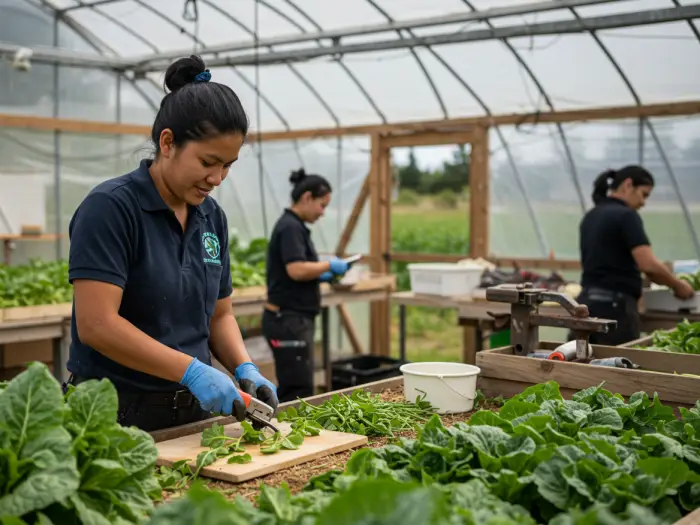
🌍 Other Work Visa Options
While Express Entry, PNP, study, and caregiver pathways are the most common, there are other routes that Filipinos use to begin working and eventually settling in Canada. These options might not lead directly to Permanent Residency (PR), but they can be stepping stones.
🛠️ Temporary Work Permits (TWP)
A Temporary Work Permit allows you to work in Canada if you have a valid job offer from a Canadian employer.
- LMIA Requirement: Most employers must secure a Labour Market Impact Assessment (LMIA), proving that no Canadian was available to fill the job before hiring a foreign worker.
- Industries Popular with Filipinos: Healthcare, engineering, hospitality, agriculture, and skilled trades.
- PR Transition: Though temporary, this work experience can later be used to qualify for PR under programs like Canadian Experience Class (CEC) or through PNPs.
👨👩👧 Family Sponsorship
If you already have close relatives in Canada, this might be the easiest path. Canadian citizens or permanent residents can sponsor their:
- Spouse or common-law partner
- Dependent children
- Parents and grandparents (though quotas and wait times apply)
Sponsored family members receive PR directly, giving them the right to live, work, and study in Canada.
🇶🇨 Quebec Immigration Programs
Quebec runs its own immigration system, separate from Express Entry. It often prioritizes French-speaking applicants and specific skilled workers. While less common for Filipinos, those with French proficiency or specialized job offers may qualify.
🌾 Special Pilots & Programs
Canada sometimes launches pilot programs targeting labor shortages in specific sectors:
- Agri-Food Pilot: For workers in farming, meat processing, and greenhouse jobs.
- Tech Pilots: Provinces like British Columbia offer streams for IT and tech professionals.
- Seasonal Agricultural Worker Program (SAWP): Allows temporary work in farming, though it does not lead directly to PR.
Key Takeaway:
Even if you don’t qualify for Express Entry or PNP right away, temporary work permits, sponsorships, and special pilots can serve as stepping stones. Many Filipinos start with these options, build Canadian work experience, then transition to permanent residency later.
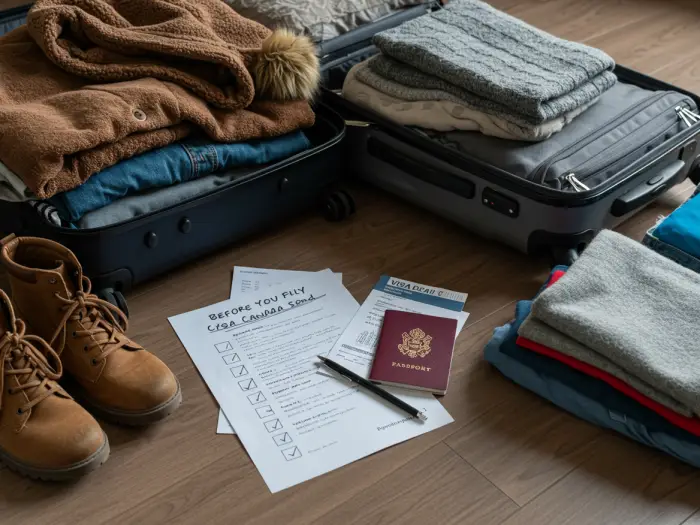
🧳 Preparing for Your Move
Deciding to migrate to Canada is only half the battle – preparing for the actual move is what separates successful migrants from those who struggle. Many Filipinos underestimate the time, money, and paperwork required. Here’s a complete breakdown of how to prepare so you’re ready the moment opportunity comes.
💰 Budgeting & Proof of Funds
Canada wants to make sure newcomers won’t struggle financially upon arrival. That’s why most PR applicants must show proof of settlement funds.
- Express Entry / PNP Applicants: You’ll need to show savings ranging from CAD $13,000–$25,000+ (₱500K–₱1M+), depending on family size. These funds must be in your name, liquid (e.g. bank savings, time deposits), and readily available. You can’t borrow them last-minute.
- Students: Expect tuition fees of CAD $15,000–$25,000 per year plus living expenses of at least CAD $10,000–$15,000 annually. For a family, this doubles or triples.
- Workers & Caregivers: Even if your employer covers airfare or housing, you’ll need savings for rent deposits, food, and daily living in your first few months.
Hidden Costs Filipinos Often Forget:
- Winter clothing (₱30K–₱50K) for those coming from tropical Philippines
- Transportation passes (₱4K–₱6K per month per person)
- Rent deposits (1–2 months’ rent upfront, especially in big cities)
- Driver’s license exchange or local licensing exams
Tip: Treat your proof of funds not just as a requirement, but as your “survival fund.” Don’t spend it all on the plane ticket – you’ll need it to get settled without stress.
📑 Essential Documents Checklist
Gathering documents can take months, especially when dealing with Philippine agencies. Prepare these early:
- Educational Credential Assessment (ECA): Done by agencies like WES or ICAS to confirm your degree is valid in Canada. Without this, your education won’t be counted for immigration points.
- Language Tests: IELTS General or CELPIP for English; TEF for French. Higher scores = more CRS points.
- Employment Records: Certificates of Employment, payslips, job descriptions, and reference letters signed by employers. These prove your work experience.
- Civil Documents: Birth certificates, marriage certificate, passports, and if applicable, annulment or custody papers.
- Police Clearance & NBI: Canada requires police clearances for every country you’ve lived in for more than 6 months.
- Medical Exam: Must be done by an IRCC-accredited panel physician. Results are sent directly to the Canadian immigration office.
Pro Tip: Make multiple certified copies and digital scans. Many Filipinos find it difficult to request replacements once already abroad.
🏢 Consultants vs. DIY Applications
- Licensed Immigration Consultants (RCICs): They guide you through requirements and submissions, but fees range from ₱100K–₱300K+. Always check if they’re accredited with the College of Immigration and Citizenship Consultants (CICC).
- DIY Applications: Thousands of Filipinos succeed on their own using the official IRCC website and community forums. It’s cheaper but requires time, patience, and attention to detail.
- Scam Warning: Never trust agencies that promise “guaranteed visas” or offer fake job orders. If it sounds too good to be true, it probably is.
⏳ Timelines: Set Realistic Expectations
- Express Entry: 6–12 months if your CRS score is high and you receive an ITA quickly.
- PNP: 12–24 months, depending on province processing times and demand for your job.
- Student-to-PR: 3–6 years total (study program + PGWP work + PR application).
- Caregivers: With the new 2025 Home Care Worker PR Pathway, many can get PR approval upfront. Others may still need 12–24 months of work before applying.
Tip: Expect delays. Immigration applications can be affected by global events, backlogs, or updated rules. Always keep backup plans and don’t resign from your Philippine job too early.
👨👩👧 Family Preparation & Logistics
Migrating as a family brings both challenges and benefits.
- For Spouses: Many programs allow your spouse to apply for an open work permit, giving them flexibility to work for any employer.
- For Children: They’ll need their own study permits. Prepare report cards, transcripts, and vaccination records – Canadian schools are strict about immunization.
- Healthcare Access: Once you’re a PR, your family is covered under Canada’s public healthcare system, but there’s usually a 3-month waiting period. Bring basic medical supplies and budget for private insurance during the transition.
Practical Tips from Filipino Migrants:
- Bring Filipino food staples (patis, bagoong, instant noodles) for comfort during your first months.
- Join local Filipino associations in your province – they’re a lifeline for support, tips, and community.
- Research housing early. Some cities like Toronto and Vancouver have very high rents; newcomers often share apartments before moving into their own homes.
✈️ Before You Fly
- Double-check all permits and visas before booking tickets.
- Carry essential documents in your hand luggage.
- Have Canadian dollars on hand for airport expenses.
- Inform your bank you’ll be abroad to avoid frozen cards.
| Pathway | Typical Cost (₱) | Timeline to PR | Family Inclusion |
|---|---|---|---|
| Express Entry | ₱200K–₱400K | 6–12 months | Yes, included in PR application |
| PNP | ₱250K–₱500K | 12–24 months | Yes, included in PR application |
| Student-to-PR | ₱1.5M–₱3M+ (tuition & living) | 3–6 years | Spouse & kids can join as dependents |
| Caregiver | ₱150K–₱300K | Direct PR or 12–24 months work first | Yes, family can migrate together |

🌟 Success Stories & Tips
Migrating to Canada is rarely a smooth, straight road – but countless Filipinos have made it by combining patience, preparation, and perseverance. Here are some mini-stories and practical lessons to guide you on your own journey.
👩⚕️ A Nurse via Express Entry
Maria, a 28-year-old nurse from Quezon City, boosted her Comprehensive Ranking System (CRS) score by retaking IELTS and getting a higher English score. Within six months, she received an Invitation to Apply and moved to Ontario with her husband.
Lesson: Improving English test results can dramatically raise your CRS points.
👨🎓 A Student Turned Permanent Resident
Ryan studied IT in Toronto under a 2-year program. He worked part-time while studying, then landed a full-time job through his Post-Graduation Work Permit (PGWP). After one year of Canadian work experience, he applied under the Canadian Experience Class and became a PR.
Lesson: Studying in Canada isn’t just about school – it’s an investment in work experience and PR eligibility.
👩👧 A Caregiver Who Brought Her Family
Liza, a caregiver from Cebu, entered Canada under the old caregiver pilot. After two years of work, she applied for PR and reunited with her husband and two kids. Under the new 2025 Home Care Worker PR Pathway, caregivers like her now have an even faster chance to bring their families.
Lesson: Caregiving remains one of the most family-friendly pathways for Pinoys who want stability and quick reunification.
💡 Practical Tips for Filipino Migrants
- Maximize CRS Points: Improve your IELTS score, gain more work experience, or consider getting a provincial nomination for extra 600 points.
- Start Documents Early: NBI clearances, ECAs, and medicals take time. Collect them before you apply to avoid delays.
- Budget Wisely: Beyond visa costs, prepare for living expenses, rent deposits, and seasonal needs like winter clothing.
- Build a Support Network: Join Filipino communities in your target province. They’re a lifeline for advice, job leads, and emotional support.
- Be Patient but Persistent: Immigration processes can take months or even years – consistency matters more than speed.
Frequently Asked Questions about Migrating to Canada from the Philippines
- What are the main immigration pathways for Filipinos wanting to move to Canada?
The most popular routes are Express Entry (for skilled workers), Provincial Nominee Programs (PNPs), family sponsorship, caregiver programs, and study-to-permanent pathways. Each has its own eligibility criteria, application process, and benefits. - How does the Express Entry system work, and is it competitive for Filipinos?
Express Entry ranks applicants using a Comprehensive Ranking System (CRS) score based on age, education, work experience, and language ability, then issues Invitations to Apply (ITAs) to top scorers. Filipinos compete globally in this pool, so having higher credentials and improving your CRS can greatly increase chances. - What language test scores do I need to qualify for Canadian immigration?
Most programs require proving English or French proficiency through tests like IELTS, CELPIP, or TEF, usually aiming for at least CLB (Canadian Language Benchmark) 7 or higher. Strong scores in all four domains (reading, writing, speaking, listening) boost your CRS and overall appeal. - How important is my education from the Philippines in the application process?
Your Philippine degree needs an Educational Credential Assessment (ECA) to see how it compares to Canadian credentials. If your schooling is assessed lower (for example, due to the 10-year basic education system previously used in the Philippines), it may reduce your CRS points. - Do I need to have a job offer in Canada before applying?
Not always-some immigration streams like the Federal Skilled Worker Program allow you to apply without a job offer as long as you meet other criteria. However, a valid job offer or provincial nomination often gives you extra points and increases your chance of success. - How much money do I need to show as proof of funds when immigrating?
You must show settlement funds sufficient to support yourself and your family until you’re able to work in Canada-this varies by family size (for example, a single applicant might need around CAD 15,000+). If you already have a valid job offer, this requirement may be waived or reduced. - How long does the migration process usually take?
Processing times depend on the immigration stream, your completeness of documents, and workload at Canadian immigration offices-but commonly it takes 6 to 12 months or longer. Delays often come from missing or mismatched documents, background checks, or credential verifications. - Can my spouse and children come with me as dependents?
Yes-most Canadian immigration programs allow you to include your spouse or common-law partner and dependent children in your application without needing separate applications. They’ll be assessed alongside you, and may also need to meet medical and security requirements. - What happens after I arrive in Canada-what do I need to prepare?
You’ll need to find housing, open a bank account, apply for a SIN (Social Insurance Number), register for health care or insurance in your province, and potentially look for work or schooling. Also be ready to adapt to Canadian weather, culture, cost of living, and norms. - Are there common mistakes Filipino applicants make, and how do I avoid them?
Many neglect getting a proper ECA first (which delays or reduces CRS points), underestimate language test impact, or submit incomplete documents. To avoid setbacks, double-check requirements, organize papers early, and consider professional advice or review before submission.
🌏 Turning Your Canadian Dream Into Reality
For decades, Canada has been more than just a place on the map for Filipinos – it’s been a symbol of hope, stability, and a better future. Whether through Express Entry, a provincial nomination, studying, or caregiving, thousands of Pinoys have found a way to make Canada their second home.
The truth is, the process isn’t always fast or easy. It requires patience, financial preparation, and determination. But if there’s one thing Filipinos are known for, it’s diskarte and resilience. With the right pathway and careful planning, the Canadian dream is absolutely within reach.
So whether you’re an OFW planning your next move, a student eyeing international studies, or a parent searching for security for your kids – start preparing today. Build your documents, save your funds, improve your skills, and take that first bold step.
✨ Who knows? The next success story we’ll be sharing might just be yours.
📚 References
- Canada Immigration Programs – CanadaVisa.com
- Express Entry: Skilled Worker Immigration – CanadaVisa.com
- Provincial Nominee Program (PNP) Overview – CanadaVisa.com
- Study in Canada as an International Student – CanadaVisa.com
- Post-Graduation Work Permit (PGWP) – CanadaVisa.com
- Canadian Experience Class (CEC) – CanadaVisa.com
- Atlantic Immigration Program (AIP) – CanadaVisa.com
- Home Care Worker PR Pathway 2025 – NavigateMigrate.com



